Sassello, Its Mill and Whiskey
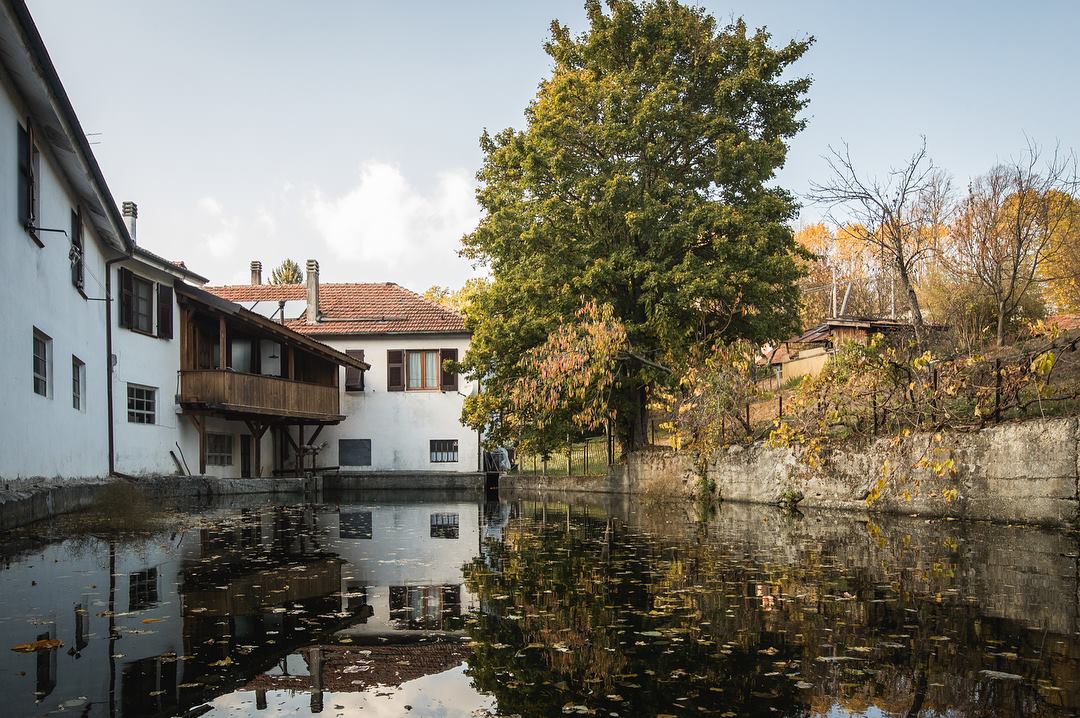
Story of an ancient water mill that grinds locally grown cereals and whiskey in the sunlight
Yes, everything at the Sassello Mill is just as you imagine: a mill at the outskirts of an ancient Ligurian village immersed in the green of the woods, built on the banks of a stream, grinding cereals cultivated in the nearby fields, spanning Liguria and Piedmont. A production not only at “zero km” but at “true kilometre.”
A mill already seems like magic: water and grain enter from one side, and miraculously, flour comes out from the other. However, there is a lot of history, nature, and wisdom in between. A mill could be a magical formula if it weren’t already something ancient, a machine that, with the sole force of nature, produces quality food. And, in the gears of the Sassello Mill, there is also a good deal of passion because, here too, like in all mills, there is a miller, Diego Assandri. We interviewed him.
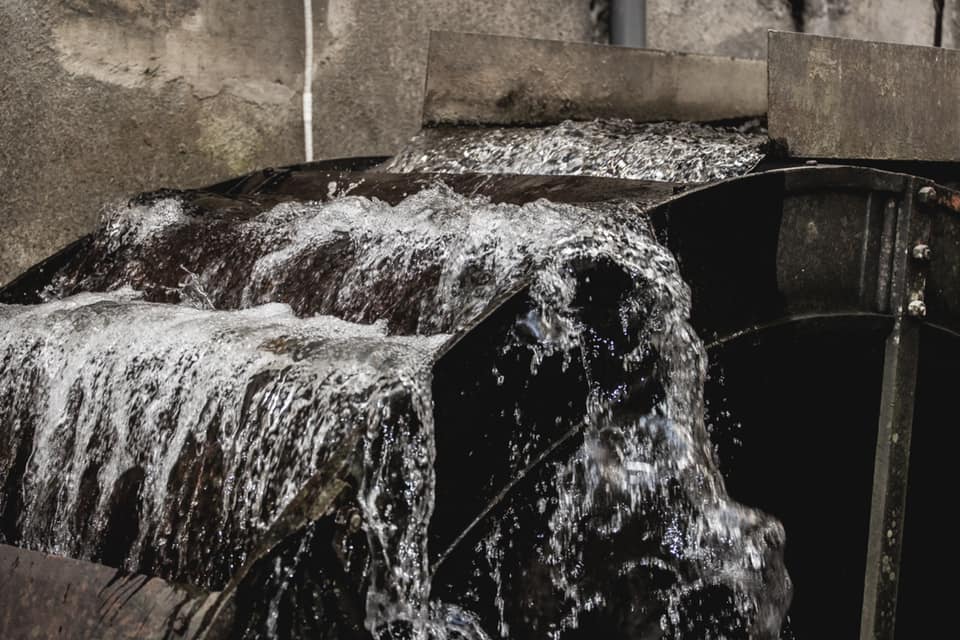
What is a mill, and how does it work?
“Our mill works like in the old days, entirely water-powered, with original mechanisms from 1830. We grind the cereals we ourselves cultivate, being in total self-production, among very few in Italy.”
Where does the water come from?
The water comes from the Rio Sbruggia, a stream with a fairly regular flow due to its tuff bottom. Additionally, we have a compensation basin that allows us to operate even when the water level is low. Thanks to the water from the Rio Sbruggia, the mill can produce 60kg of flour per hour. We cultivate about 450 quintals of wheat per year and also grind for others: Saturdays are dedicated to customers who come to us to grind the wheat or corn they have cultivated.
What is your flour like?
Our flour is slightly coarser, comparable to a 0/1, as flour used to be. Yellowish in color, it is suitable for any household use. We also grind spelt, rye, and corn, from which we make polenta. We don’t keep stock; we respond to the day’s needs.
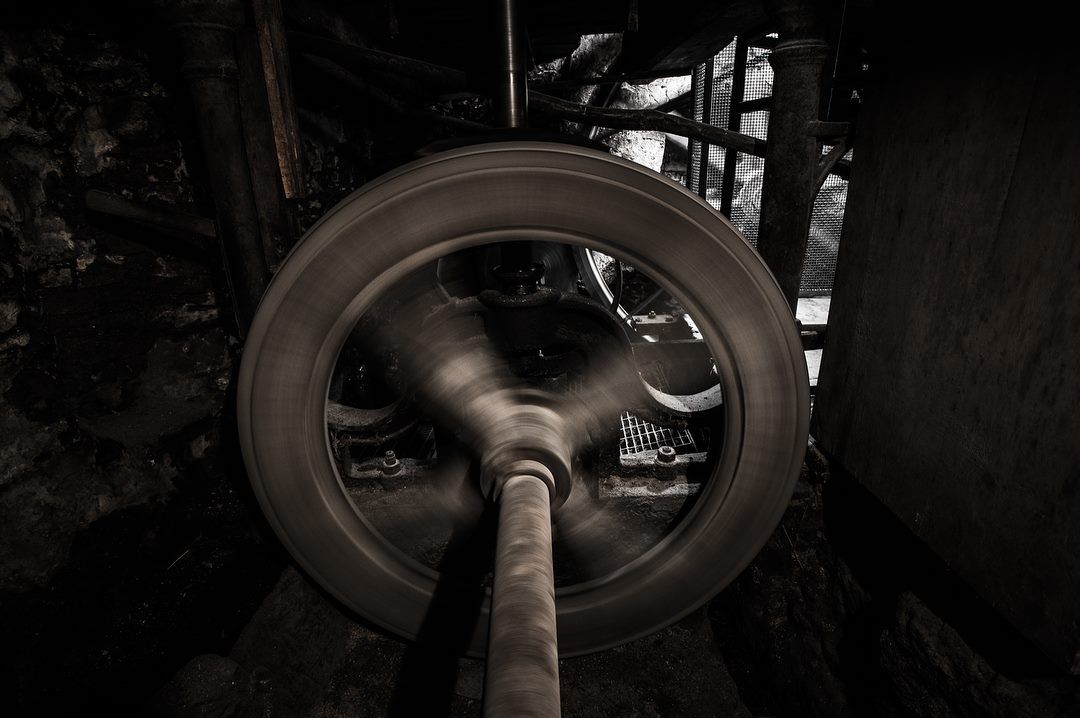
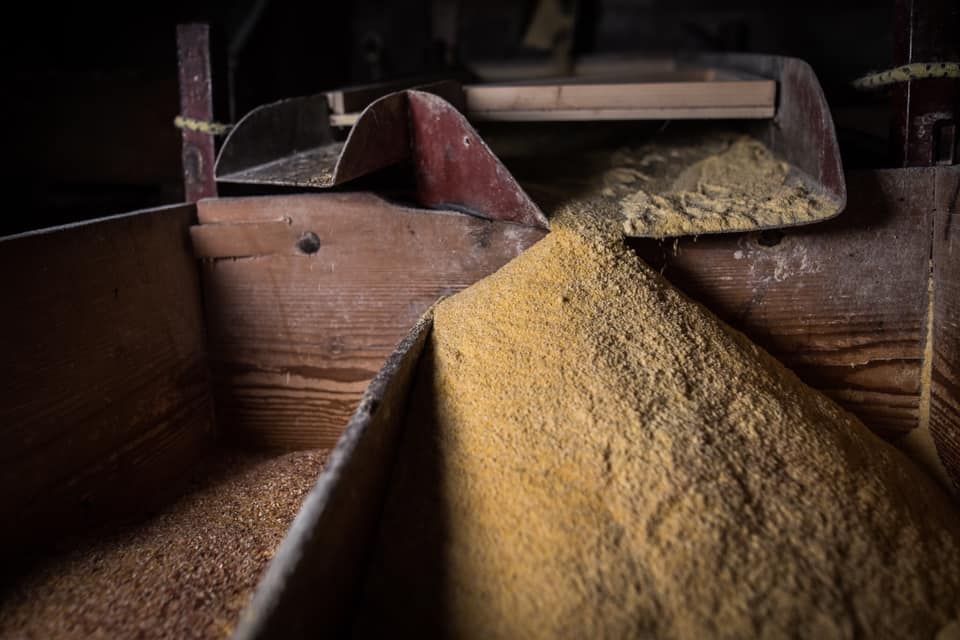
What is it like to be a miller? How many millers are there in Italy?
There are still millers in Italy, but today, milling is done with “cylinders,” while my father Rinaldo and I probably remain the last ones to grind with stone and water. Even our millstones are special: they are made of French stones, obtained between Menton and Ventimiglia, not easy to find. The miller’s life is simple: you get up early in the morning and start the machine. But water is an energy that is always there; there is no switch to press like in all other machines today: to start the mill, you have to open a series of gates and send the water to the wheel. Then, through a series of pulleys and gears, we can redirect the energy of the wheel where we need it.
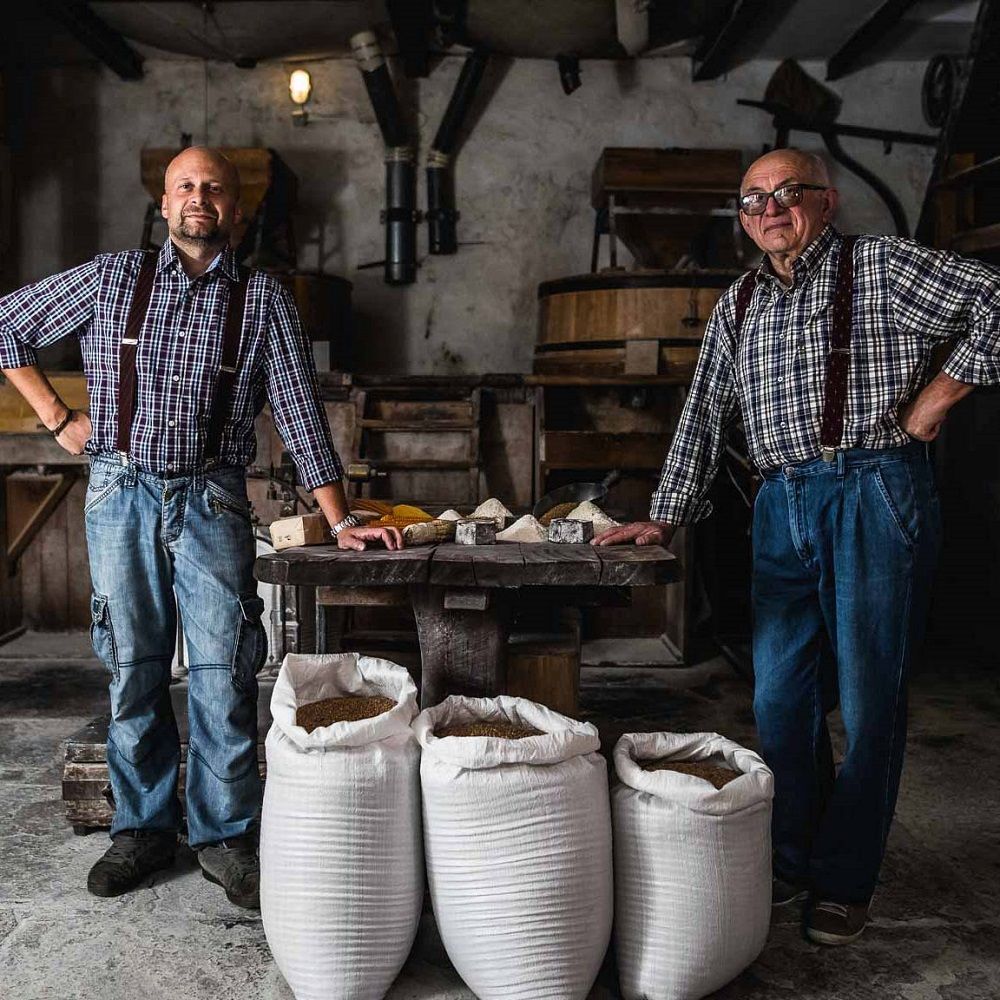
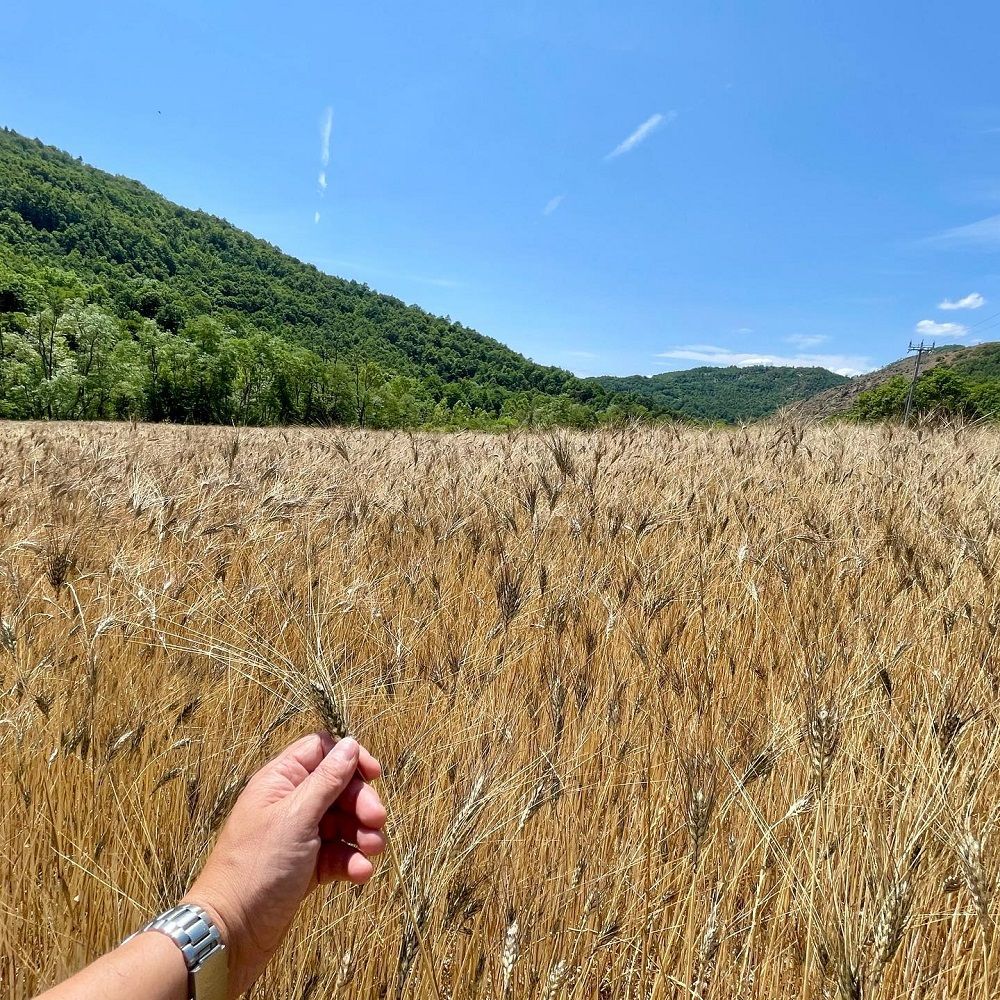
And the Whiskey?
We recently set in motion the distillery right next to the mill. It is the first in Liguria. It arises from the idea of having an additional product made with flour: in addition to bread, cookies, and pasta, flour is also used for spirits, beer, and whiskey. We have tried to make a noble spirit, a whiskey. We have produced a fresh one, the “Moonshine,” made 100% with corn for immediate sale, while another, made with white cereals, spelt, rye, and wheat, is currently being bottled and will be ready in three years. The “Moonshine” has recently been named as the 2023 World Champion in the New Make & Young Spirit category – Unaged Whiskey.
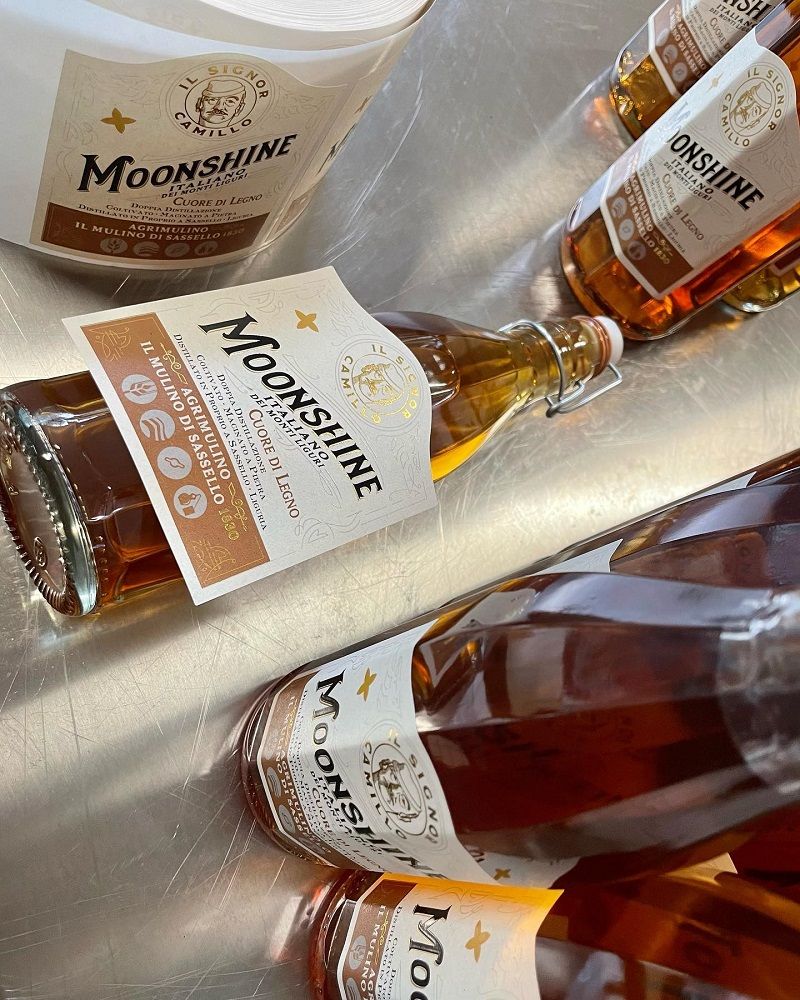
Contacts:
http://www.mulinodisassello.it



